
Gentofte Municipality is a municipality in the Capital Region of Denmark on the east coast of the island of Zealand (Sjælland) in eastern Denmark. It covers an area of 25.54 km2 (9.86 sq mi), and has a total population of 75,033. Since 17 May 2021, its mayor has been Michael Fenger, a member of the Conservative People's Party.
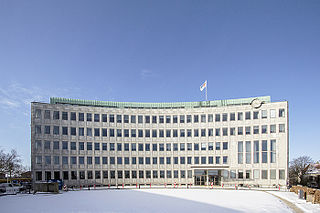
Lyngby-Taarbæk Municipality is a municipality in the Capital Region of Denmark near Copenhagen on the eastern coast of the island of Zealand. It is part of the Greater Copenhagen area. The municipality borders Rudersdal Municipality to the north, Furesø Municipality to the west and Gladsaxe and Gentofte Municipality to the south. It borders the Øresund to the east.
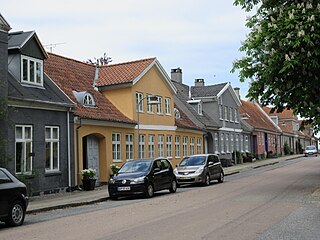
Hørsholm is an urban area on the Øresund coast approximately 25 km (15.53 mi) north of Copenhagen, Denmark. It covers most of Hørsholm Municipality and straddles the borders neighbouring Fredensborg Municipality and Rudersdal Municipality.
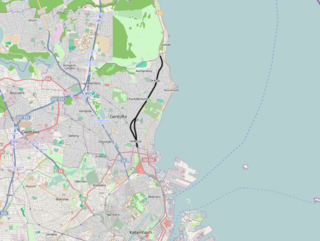
The Klampenborg Line is a railway line between Copenhagen and Klampenborg in the northern suburbs of Copenhagen, Denmark. It is the shortest of the six radial lines of Copenhagen's S-train network, a hybrid commuter rail and rapid transit system serving Greater Copenhagen.
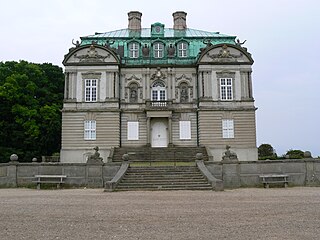
The Hermitage Hunting Lodge is located in Dyrehaven north of Copenhagen, Denmark. The hunting lodge was built by architect Lauritz de Thurah in Baroque style from 1734 to 1736 for Christian VI of Denmark in order to host royal banquets during royal hunts in Dyrehaven.

Dyrehaven, officially Jægersborg Dyrehave, is a forest park north of Copenhagen in the county of Lyngby-Taarbæk. It covers around 11 km2 (4.2 sq mi). Dyrehaven is noted for its mixture of huge, ancient oak trees and large populations of red and fallow deer. In July 2015, it was one of the three forests included in the UNESCO World Heritage Site inscribed as Par force hunting landscape in North Zealand.

Charlottenlund is a suburban area on the coast north of Copenhagen, Denmark. It is the administrative seat of Gentofte Municipality. Bordered to the east by the Øresund, to the South by Hellerup and to the north by Klampenborg, it is one of the wealthiest areas in Denmark. The neighbourhood takes its name after Charlottenlund Palace.

Sorgenfri Palace is a royal residence of the Danish monarch, located in Lyngby-Taarbæk Municipality, on the east side of Lyngby Kongevej, in the northern suburbs of Copenhagen. The surrounding neighbourhood is called Sorgenfri after it. Only the cellar and foundations survive of the first Sorgenfri House, which was built in 1705 to design by François Dieussart. The current house was built in 1756 by Lauritz de Thurah and later adapted and extended by Peter Meyn in the 1790s. Lauritz de Thurah has also designed buildings which flank the driveway closer to the road.

Princess Charlotte Amalie of Denmark and Norway was a Danish princess, daughter of King Frederick IV of Denmark and Louise of Mecklenburg-Güstrow.
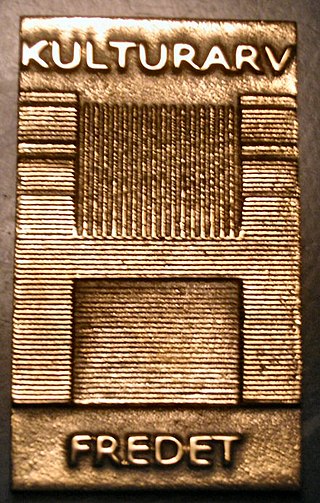
The Danish Agency for Culture and Palaces is an agency under the aegis of the Danish Ministry of Culture. The agency carries out the cultural policies of the Danish government within the visual and performing arts, music, literature, museums, historical and cultural heritage, broadcasting, libraries and all types of printed and electronic media. It works internationally in all fields, and increased internationalisation of Danish arts and cultural life is a top priority. The Danish Agency for Culture was founded on 1 January 2002 when the Danish Heritage Agency, the Danish Arts Agency and the Danish Agency for Libraries and Media merged. The Danish Agency for Culture and Palaces was founded on 1 January 2016 by a fusion of the Danish Agency for Culture and the Danish agency Styrelsen for Slotte & Kulturejendomme.
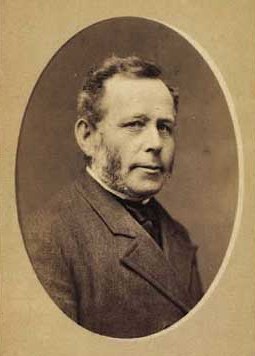
Henrik (Henry) August Flindt was a Danish gardener and landscape architect. His specialty was manor house gardens, of which he designed around 200 in Denmark and abroad. He also designed the current University of Copenhagen Botanical Garden as well as Ørstedsparken and Østre Anlæg in Copenhagen's Fortification Ring, the former grounds of the city's old fortification ring which was abandoned in 1990

Thorvald Jørgensen was a Danish architect, most known for his design of Christiansborg Palace, the seat of the Danish Parliament, after it had been destroyed in a fire. He has also designed a number of churches in Copenhagen. He was Royal Building Inspector from 1911 to 1938.
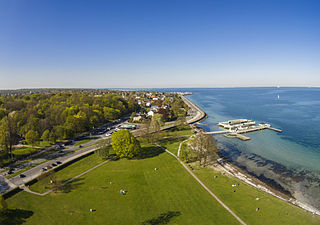
Charlottenlund Beach Park is a seaside public park in Charlottenlund, Gentofte Municipality, in the northern suburbs of Copenhagen, Denmark. The area consists of a white sandy beach and extensive lawns, surrounding Charlottenlund Fort.

Jægersborg is a suburban neighbourhood in Gentofte Municipality, some 12 km north of central Copenhagen, Denmark.

The Par force hunting landscape in North Zealand is a collection of hunting grounds and forests north of Copenhagen. The landscape was submitted for admission to the UNESCO List of World Heritage Sites on 1 August 2010 and was inscribed on 4 July 2015. The landscape comprises three main areas: Store Dyrehave, Gribskov and Jægersborg Dyrehave/Jægersborg Hegn, and contains the most significant hunting grounds for the medieval nobility in Denmark. The central-star grid design of the landscape, with numbered roads and stone posts, fences, demonstrates the unique planning and design of hunting landscapes in the 17th and 18th centuries.

The park of Frederiksborg Castle is located to the north and west of Frederiksborg Castle in Hillerød, Denmark. It consists of a formal Baroque garden and a Romantic landscape garden.

The Lapidarium of Kings is a lapidarium in Copenhagen, Denmark. It exhibits a royal collection of sculptures, natural stone figures and plaster models.

Cottageparken is a public park located on the border between Taarbæk to the north and Klampenborg to the south, adjacent to Jægersborg Dyrehave and Bellevue Beach, on the Øresund coast north of Copenhagen, Denmark. It is most notable for Den Røde Cottage and Den Gule Cottage, the only surviving buildings of Klampenborg Spa which opened at the site in the 1840s. They are now operated as restaurants. Den Røde Cottage has one star in the Michelin Guide. Until 2017 its chef was Anita Klemensen. The park is located within Klampenborg postal district but in Lyngby-Taarbæk Municipality.
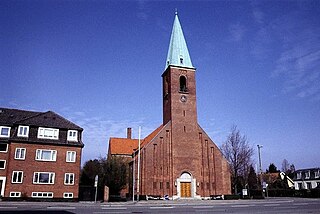
Bernstorffsvej is a major road in the Gentofte Municipality, located in the northern suburbs of Copenhagen, Denmark. It runs from Lyngby to a five-way roundabout on Jægersborg Allé in the north. The road passes several notable Danish buildings, including Gentofte Town Hall, Helleruplund Church, the Roman Catholic, St. Theresa's Church, Hellerup Cemetery and Bernstorff Park.
Jægersborg Allé is a major street in the Charlottenlund and Jægersborg neighborhoods of Gentofte Municipality in the northern suburbs of Copenhagen, Denmark. It runs from Strandvejen in the southeast to a junction just east of Jægersborg railway station in the northwest. The first leg of the road passes through Charlottenlund Forest, and it later follows the north boundary of Bernstorff Park. It passes a number of historic buildings, including Charlottenlund Palace, Bernstorff Palace and Schæffergården.


























